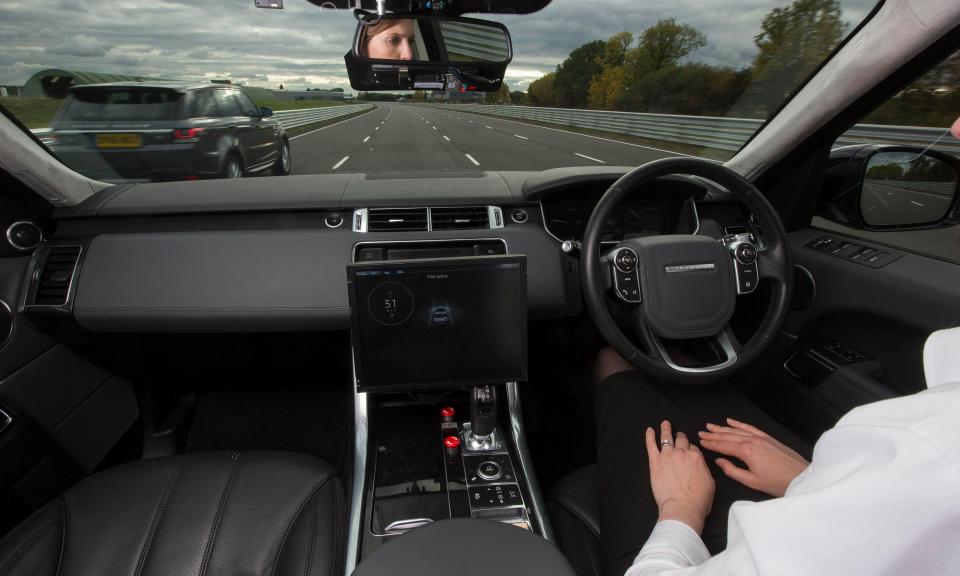My published article can also be found HERE
If you’re in the insurance market the subject of driverless cars (or autonomous vehicles) has no doubt been a topic of conversation over many an industry dinner of late. There is no getting away from the fact that the insurance industry will be profoundly changed as driverless cars hit the roads. Motor insurance currently accounts for approximately 42% of the UK property and casualty market according to KMPG. However, they estimate that in the personal lines sector alone this market could shrink to just 40% of its current size within the next 25 years as a result of advances in autonomous driving technology.
Google, Ford and Volvo claim to be on schedule in terms of building and launching to market self-drive cars that require absolutely no human intervention, whilst perhaps more worrying for the insurance industry was the news recently that Tesla is already selling car insurance in Asia with its vehicles as part of its vision to one day include insurance in the final price of the car.
Much has been discussed about how insurers will respond, but what about the role of the broker in the new world autonomous order?
Liability
This has obviously been at the heart of the driverless insurance debate.
Google predicts that the adoption of driverless cars could bring about a 90% reduction in the number of accidents through the removal of human error. But accidents can, and will still happen, so despite the ramblings of the doomsayers motor insurance won’t become obsolete. But, will it be the manufacturer of the vehicle or the manufacturer of the individual techs that will shoulder the burden of responsibility, or will the driver still be held partially accountable?
Volvo has boldly stated that it would accept full liability in the event of one of its driverless cars being involved in an accident. However, it is likely that the first raft of driverless vehicles will not be fully autonomous, with the car handling certain tasks but leaving the driver in ultimate charge – so what happens then?
Any cover provided by the manufacturer will probably be limited to straight forward incidents of vehicle software malfunction. This will be insufficient to cover a wide variety of situations currently covered by comprehensive policies – acts of god, vandalism, arson, a passenger opening a door into a wall….the list goes on. This is evidenced by the wide array of additional products which compliment a fully comprehensive policy.
The role of the broker has perhaps therefore never been more important, matching insurance protection proportionate to the risk of the individual car, as well as the individual driver, in addition spotting gaps in cover and sourcing additional products which limit the risk. The risk for the broker lies in the unknown nature of autonomous technology risks, and the chance that they could find themselves potentially liable for failure to accurately anticipate and source suitable cover.
Finally, most articles focus on liability but what about quantum? If a client suffers loss of earnings from an accident, or a business incurs loss of goods, interruption of service, or even damage to reputation they will surely need guidance in quantifying and recovering those losses? Again an opportunity for the broker to prove their value.
Emerging Risks
Driverless vehicles relying on 4G/5G connectivity will bring with them new risks such as cyber crime, hacking, ransomwares. It’s not inconceivable (particularly when cars are increasingly the weapon of choice for terrorists) that hackers could re-programme a vehicle to change lanes and have a head-on accident, override vehicle controls, or even create what has been coined ‘spam jams’ (hacker created congestion).
Will these potential risks be covered elsewhere within a standard policy wording or as an add-on? Drivers will still rely on brokers to assess potential additional risks, and arrange for the necessary complimentary insurances. Likewise, commercial customers will need to protect themselves, particularly lorries carrying high value goods which, driverless and unprotected, may attract the attention of criminal organisations.
Get Ahead
Driverless car technology has been in development for over 50 years – the thought of cars driving around our streets with no human intervention is no longer the stuff of science fiction, it’s here.
Underwriters need to start creating new products to reflect the new risks. Brokers need to accept that autonomous vehicles will threaten their current business model and respond appropriately. One likely action is to develop their IT software to enable them to download and interpret reports generated by the driverless vehicles.
There are so many questions yet to be answered, risks to be identified, and problems to be resolved. Driverless vehicles will carry a hefty price tag though, so the number on the road will be limited until the technology becomes affordable for the masses, but this is happening faster than people think, so it is wise to be prepared.
Here at ALPS we are developing technology for the initial notification of a motor claim, along with the whole customer claims experience. This can then further support both broker and insurer data capture. Whilst technology will certainly help with speed and efficiency, its important to understand that many customers will still crave a person-to-person service, especially if the claims experience is new or the incident one of a serious nature.
ALPS is keen to hear your views on the likely impact of autonomous vehicles. Computers haven’t taken over yet, it is down to us as an industry to work together, debate the issues and come up with innovative solutions; it is only in doing so that we can adapt and evolve and ensure that we protect the role of the broker and deliver best value to the customer.
Please, share this article, and get in touch with us or leave a comment about your views on the likely impact of autonomous vehicles.





Recent Comments